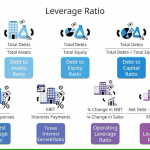When a company decides to go public, it embarks on a journey that can lead to significant growth and financial success. The initial public offering (IPO) process allows a private company to sell its shares to the public, providing access to a larger pool of capital and increased visibility. However, the path to a successful IPO is fraught with challenges, and many companies find themselves facing the harsh reality of IPO failure.
IPO failure can take various forms, from a complete withdrawal of the offering to a dismal performance in the aftermarket. Regardless of the specific outcome, the consequences can be devastating for both the company and its investors. Understanding the reasons behind these failures is crucial for anyone looking to navigate the complex world of public markets.
In this article, we will delve into the common reasons why IPOs fail, exploring the factors that can derail even the most promising offerings. By analyzing the lessons learned from past IPO failures, we can equip ourselves with the knowledge to make more informed decisions and mitigate the risks associated with this process.
Common reasons for IPO failures
Lack of market demand
One of the primary reasons for IPO failures is a lack of market demand for the company’s shares. This can be due to a variety of factors, including unfavorable market conditions, a mismatch between the company’s valuation and investor expectations, or a lack of understanding about the company’s business model and growth potential.
In a bearish or volatile market, investors may be more cautious about investing in new offerings, leading to a lack of interest and weak demand for the IPO. This can result in the company being unable to raise the desired amount of capital or, in the worst-case scenario, the withdrawal of the offering altogether.
Furthermore, if the company’s valuation is perceived as too high or unrealistic, investors may be unwilling to participate, leading to a failed IPO. This can happen when a company’s management overestimates the market’s appetite for its shares or fails to effectively communicate the company’s value proposition to potential investors.
Poor financial performance
Another common reason for IPO failures is poor financial performance. Investors are primarily interested in companies that demonstrate a track record of strong financial results, sustainable growth, and the potential for future profitability. If a company fails to meet these expectations, it can lead to a failed IPO.
Companies with a history of losses, declining revenues, or unsustainable business models are often viewed as high-risk investments, making it challenging to attract investor interest. Investors may be skeptical of the company’s ability to deliver on its growth projections and may be unwilling to take on the perceived risk.
Additionally, if a company’s financial statements reveal significant debt, liquidity issues, or accounting irregularities, it can further erode investor confidence and contribute to the failure of the IPO. Transparent and accurate financial reporting is crucial in the IPO process, and any perceived discrepancies or red flags can be detrimental to the offering’s success.
Regulatory issues and legal challenges
The IPO process is heavily regulated, and companies must navigate a complex web of rules and regulations to go public. Failure to comply with these requirements or facing legal challenges can be a significant factor in the failure of an IPO.
Regulatory issues can arise from a variety of sources, such as non-compliance with securities laws, regulatory changes, or issues related to the company’s business operations. For example, if a company operates in a heavily regulated industry or is facing regulatory scrutiny, it may struggle to obtain the necessary approvals or face delays that can derail the IPO process.
Legal challenges can also be a significant obstacle to a successful IPO. Lawsuits or disputes related to intellectual property, employment practices, or other business-related issues can create uncertainty and undermine investor confidence, leading to the withdrawal or failure of the offering.
Mismanagement and corporate governance problems
Poor management and weak corporate governance can also contribute to the failure of an IPO. Investors are looking for companies with experienced, competent, and trustworthy leadership teams that can guide the organization through the public markets and deliver on their promises.
If a company’s management team lacks the necessary skills, experience, or vision to effectively lead the company, it can undermine investor confidence and lead to the failure of the IPO. Instances of mismanagement, such as poor decision-making, lack of transparency, or conflicts of interest, can further erode investor trust and make it challenging to attract and retain investors.
Moreover, weak corporate governance practices, such as a lack of independent directors, inadequate internal controls, or a concentration of power in the hands of a few individuals, can also raise red flags for investors and contribute to the failure of an IPO. Investors are increasingly scrutinizing the governance structures of companies going public, and any perceived deficiencies in this area can jeopardize the success of the offering.
Failure to meet investor expectations
Lastly, the failure to meet investor expectations can also lead to the downfall of an IPO. Investors have specific expectations regarding a company’s growth potential, financial performance, and long-term prospects, and if a company fails to deliver on these expectations, it can result in a failed offering.

This can happen when a company overpromises or fails to effectively communicate its value proposition to investors. If the company’s actual performance and growth trajectory do not align with the projections and narratives presented during the IPO process, investors may lose confidence and withdraw their support, leading to a failed offering.
Additionally, if a company is unable to maintain the momentum and growth it exhibited during the IPO process, it can also disappoint investors and contribute to the failure of the offering. Investors are looking for companies that can sustain their performance and continue to deliver value in the long run, and any failure to meet these expectations can be detrimental to the success of the IPO.
Case studies of failed IPOs
To better understand the reasons behind IPO failures, let’s examine a few case studies of companies that have faced this challenge.
1. Snap Inc. (Snapchat) — 2017 IPO
The Hype:
Snap Inc., the parent company of Snapchat, launched its IPO in 2017 amidst high expectations. The company was seen as one of the most exciting social media platforms to emerge in the post-Facebook era, with a unique focus on younger users and features like disappearing messages and innovative filters. The IPO was highly anticipated, with Snap raising $3.4 billion, giving it an initial valuation of around $24 billion.
The Failure:
Despite the fanfare, Snap’s IPO quickly became a cautionary tale. Several key factors contributed to the underperformance of its stock in the months following the public offering:
- Overvaluation: Snap went public with a valuation that many considered to be excessively high. At the time of its IPO, the company was not profitable, and its revenue growth was slowing down. The valuation was based largely on Snap’s potential, rather than its actual financial performance. Investors soon realized that the company had significant obstacles ahead to justify its lofty valuation.
- Sluggish User Growth: Snap’s user base was not expanding as quickly as investors had hoped. Snapchat’s daily active user growth was stagnating, particularly in the face of intense competition from Facebook-owned Instagram, which was rapidly rolling out similar features like Stories. This raised doubts about Snap’s ability to scale its business in a crowded social media landscape.
- Corporate Governance: Snap’s dual-class share structure also alarmed investors. Co-founders Evan Spiegel and Bobby Murphy maintained control of the company through a special class of shares that gave them over 90% of voting power. This concentration of control, without any meaningful checks on executive decisions, was a red flag for investors concerned about corporate governance and accountability.
- Profitability Concerns: Snap had yet to prove it could make money consistently. Although the company had impressive revenue growth before the IPO, it was not yet profitable and showed no clear path to profitability, which made investors skittish in the long term.
The Outcome:
Following the IPO, Snap’s stock price plummeted, dropping from its IPO price of $17 per share to below $5 by the end of 2018. While the company has since made efforts to improve its financial standing and product offerings, the rocky start reflected fundamental concerns about the company’s growth prospects, competitive position, and governance. Snap’s IPO failure serves as a reminder of the dangers of overhyping unprofitable tech companies with uncertain futures.
2. Blue Apron — 2017 IPO
The Hype:
Blue Apron, a meal kit delivery service, went public in 2017, attempting to capitalize on the growing market for subscription-based meal services. At its peak, Blue Apron was one of the most well-known brands in this niche industry, providing pre-portioned ingredients and recipes for home-cooked meals. The company initially aimed to raise up to $510 million but had to settle for $300 million after cutting its IPO price from $15-$17 per share to just $10.
The Failure:
Blue Apron’s IPO was a massive disappointment for investors, as its stock price plummeted shortly after the offering due to several major challenges:
- Intense Competition: Blue Apron faced fierce competition from both established players and new entrants. Companies like HelloFresh and Plated, as well as traditional grocery stores and online retailers like Amazon, were quickly encroaching on its market share. This put immense pressure on Blue Apron’s ability to differentiate itself in a commoditized industry.
- Customer Retention Issues: One of the most significant problems for Blue Apron was its inability to retain customers. Meal kit delivery services often face high churn rates, as customers cancel subscriptions after short periods. This led to exorbitant customer acquisition costs, eroding profitability. Without consistent and loyal customers, Blue Apron struggled to scale sustainably.
- Operational Problems: Blue Apron faced internal challenges in managing its operations efficiently. The company’s facilities were experiencing difficulties in scaling production, which led to shipping delays and issues with food quality. These problems hurt the company’s reputation at a crucial time when it needed to show stability and growth.
- Financial Losses: Blue Apron was bleeding cash, reporting significant losses at the time of its IPO. This raised serious concerns among investors about whether the company could ever become profitable. Without a clear path to profitability, investor confidence dwindled.
The Outcome:
By the end of 2017, Blue Apron’s stock had lost more than two-thirds of its value, and it continued to struggle in the years following its IPO. Despite attempts to cut costs and streamline operations, Blue Apron was never able to fully recover, and it serves as a prime example of how operational challenges and high customer churn can derail an IPO, especially in competitive and fast-moving industries.
3. Uber Technologies — 2019 IPO
The Hype:
Uber Technologies, the ride-hailing giant, went public in May 2019 with one of the most anticipated IPOs of the decade. Uber was a household name, having revolutionized the way people traveled in cities and disrupted the taxi industry worldwide. The company raised $8.1 billion in its IPO, valuing Uber at approximately $82 billion, though it had originally aimed for a valuation as high as $120 billion.
The Failure:
Uber’s IPO, while raising significant capital, was widely viewed as a disappointment. The stock began trading at $45 per share but ended the first day below the IPO price, and it continued to decline in the months following the public offering. Several factors contributed to this underwhelming performance:
- Unprofitability: Uber’s losses were staggering, and it had no clear path to profitability at the time of its IPO. In 2018, the company reported a loss of $1.8 billion. Investors were concerned about Uber’s ability to turn a profit, especially as its growth appeared to be slowing in key markets. Unlike tech companies with high margins, Uber’s business model—relying on ride-hailing and food delivery—had inherently low margins, raising questions about its long-term sustainability.
- Regulatory Challenges: Uber was facing increasing regulatory scrutiny in several key markets. The company was entangled in legal battles over the classification of its drivers as independent contractors versus employees, which could have significant cost implications. Additionally, cities like London and New York were tightening regulations on ride-hailing services, adding more uncertainty to Uber’s growth prospects.
- Corporate Governance and Controversies: Uber’s corporate governance and internal culture had been under fire for years leading up to the IPO. The ousting of founder and former CEO Travis Kalanick after a series of scandals, including sexual harassment allegations and aggressive workplace culture, had already cast a shadow over the company. Though Uber brought in a new CEO, Dara Khosrowshahi, to repair its image, the reputational damage had a lasting impact on investor confidence.
- Slowing Growth: While Uber had grown rapidly in its early years, by the time of its IPO, the company’s growth was decelerating, particularly in mature markets. The competition in ride-hailing was fierce, with rivals like Lyft, Didi, and Bolt putting pressure on Uber in various regions. Investors became concerned that Uber’s best growth years were behind it, even as it continued to lose money.
The Outcome:
Following the IPO, Uber’s stock price declined steadily, losing over 30% of its value in the first few months. Though the company has since taken steps to improve profitability—such as cutting costs, divesting non-core businesses, and growing its food delivery arm (Uber Eats)—the IPO failure is a lesson in how even highly visible and established companies can stumble when investor expectations are not aligned with financial reality.
Conclusion: Lessons learned and avoiding IPO failures in the future
The case studies of failed IPOs provide valuable lessons for both companies and investors to consider when navigating the public markets. By understanding the common reasons for IPO failures, we can develop strategies to mitigate the risks and increase the chances of a successful offering.
For companies looking to go public, it is crucial to carefully assess market conditions, ensure strong financial performance, and maintain robust corporate governance practices. Effective communication with investors, transparency in financial reporting, and a clear growth strategy are also essential elements for a successful IPO.
Investors, on the other hand, should conduct thorough due diligence on the companies they are considering investing in. This includes analyzing the company’s financial statements, understanding its business model, and evaluating the management team and corporate governance structure. By being discerning and selective in their investment decisions, investors can reduce the risk of investing in failed IPOs.
Additionally, both companies and investors should stay informed about regulatory changes and legal developments that may impact the IPO process. Staying ahead of these evolving factors can help companies navigate the complexities of going public and allow investors to make more informed decisions.
By learning from the lessons of past IPO failures, companies and investors can work together to create a more transparent and efficient public market ecosystem. This collaborative approach can help mitigate the risks associated with IPOs and increase the chances of successful offerings that benefit all stakeholders.
In conclusion, the failure of IPOs is a complex and multifaceted issue, with a range of factors contributing to the downfall of even the most promising offerings. By understanding the common reasons for these failures, we can develop strategies to navigate the public markets more effectively and increase the chances of successful IPOs in the future. As the landscape of public markets continues to evolve, staying informed and adaptable will be key to achieving long-term success in this dynamic and challenging environment.






